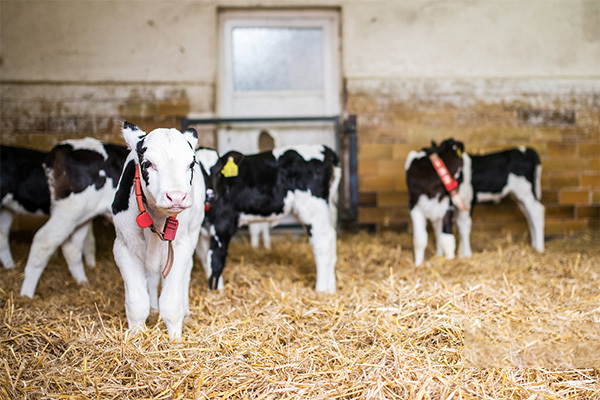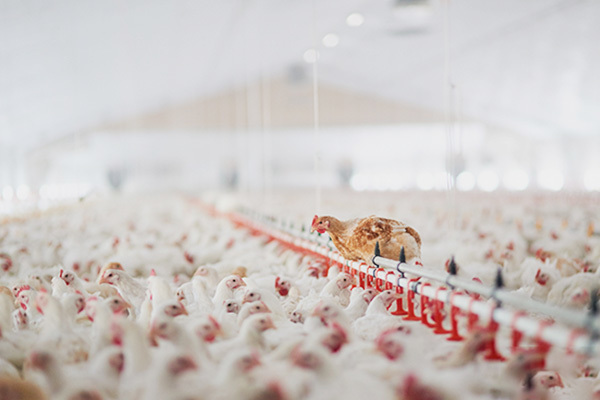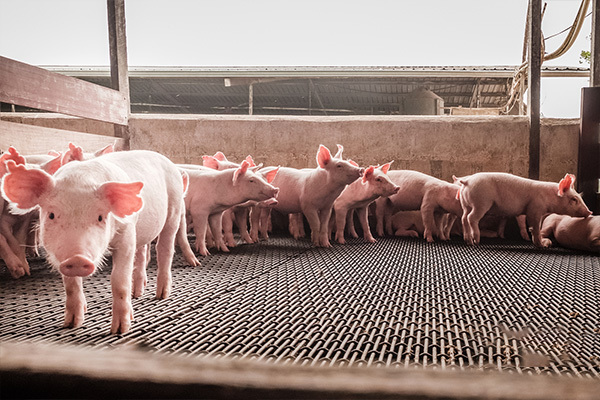National Animal Diseases Compulsory Immunization Program of 2018
First, the overall requirements
(1) Immune disease
Highly pathogenic avian influenza, foot and mouth disease, small ruminant plague, brucellosis, echinococcosis.
(2) Immunization requirements
For highly pathogenic avian influenza, foot-and-mouth disease, small ruminant plague, brucellosis, and echinococcosis, the population immune density should be maintained at more than 90% per year, and the immune density of livestock and poultry should be 100%. The rate of high-pathogenic avian influenza, foot-and-mouth disease and small ruminant immune antibodies has remained above 70%.
(***) immunized animal species and regions
Highly pathogenic avian influenza: immunizes all chickens, waterfowl (ducks, geese), captive babies, pigeons, etc. in the country with highly pathogenic avian influenza H5 subtypes and H7 subtypes. Poultry and importing countries (regions) for research and vaccine production expressly require that poultry that are immune to highly pathogenic avian influenza should not be implemented. After approval by the provincial veterinary authorities, the immunization may not be implemented.
Foot-and-mouth disease: Immunization of O-type foot-and-mouth disease to all pigs, cattle, sheep, camels and deer in the country; Type A foot-and-mouth disease immunization against all cows and bulls. In addition, the Inner Mongolia, Yunnan, Tibet, Xinjiang, and Xinjiang Production and Construction Corps immunizes all cattle and camels, camels, and deer with type A foot-and-mouth disease; Guangxi immunizes cattle and sheep in the border areas with type A foot-and-mouth disease, Jilin, In Qinghai and Ningxia, all cattle were immunized with type A foot-and-mouth disease, and Liaoning and Sichuan were immunized with type A foot-and-mouth disease in cattle in key areas. According to the assessment results, the provinces determine whether they are immune to swine type A foot-and-mouth disease. Before June 30, all types of cattle, sheep, camels and deer in the country were immunized against Asian type I foot-and-mouth disease.
Peste des Petits Ruminants: Immunizes all sheep in the country with small ruminant plague. The provincial veterinary authorities in accordance with the requirements of the National Plan for the Elimination of Veterinary Animal Diseases (2016-2020), in areas where non-immunization-free areas of small ruminant disease are carried out, may not be immunized, and the Ministry of Agriculture shall file the case.
Brucellosis: In areas such as brucellosis, brucellosis is immunized against cattle and sheep other than breeding stocks; breeding animals are prohibited from immunization; and according to the assessment results, the provinces determine whether the dairy animals are immune or not. The farm can apply for immunization to the local veterinary authorities at or above the county level. After being reported to the provincial veterinary department for registration by the veterinary authorities at or above the county level, the immunization measures should be taken on a field basis. In the second category of brucellosis, it is forbidden to immunize cattle and sheep in principle; if the positive rate of individual detection of cattle is ≥1% or the positive rate of individual detection of sheep is ≥0.5%, immunization measures are required. Apply to the local veterinary authorities at or above the county level for immunization. After the veterinary authorities at or above the county level report to the provincial veterinary authorities for approval, take immunization measures on the basis of the field group.
Hydatid disease: In the epidemic area of echinococcosis, the newborn lamb and the supplemental sheep are promptly vaccinated against echinococcosis.
Swine fever, highly pathogenic pig blue ear disease: all localities should be implemented in accordance with the national guidelines for prevention and treatment.
Second, the type of vaccine
H5+H7 subtype highly pathogenic avian influenza, foot and mouth disease, small ruminant plague, brucellosis, and echinococcosis vaccine approved by the state. The specific information of the vaccine product can be found in the “National Veterinary Drug Basic Information Inquiry” platform “Veterinary Drug Product Approval Document Number Data” of the Chinese Veterinary Drug Information Network.
***, immune subject
Units and individuals that raise animals are compulsory immune subjects. They bear the responsibility of compulsory immunization according to the Animal Epidemic Prevention Law, earnestly fulfill their compulsory immunization obligations, implement immunizations on their own, do a good job in immunization records, and establish an immunization file.
Fourth, division of responsibilities
According to the relevant documents of the State Council, local people's governments at various levels have overall responsibility for animal epidemic prevention work within their jurisdiction, and organize relevant departments to implement mandatory immunization programs according to their division of responsibilities.
The veterinary authorities at all levels shall organize and implement the mandatory immunization plan, and be responsible for organizing the regulation of the allocation, preservation and use of compulsory immunization vaccines. Animal disease prevention and control institutions at all levels and relevant national veterinary reference laboratories are responsible for the evaluation of mandatory immune effects in the use of links. Animal health supervision agencies at all levels are responsible for strengthening the supervision and inspection of the farmer's performance of mandatory immunization obligations.
The provincial veterinary department will work with the provincial financial department to do the bidding and procurement of compulsory immunization vaccines.
The veterinary departments at all levels should actively coordinate the financial departments at the same level to ensure that funds for compulsory immunization subsidies (including vaccines, consumables, labor, monitoring and evaluation of immune effects, personnel protection, and disposal of immune side reactions) are in place. Strengthen the use of funds for supervision, ensure that funds are earmarked for specific purposes, and regulate the rational use.
Other relevant departments cooperated with the implementation of the mandatory immunization program.
V. Organization and implementation
(1) Formulating an implementation plan. All localities shall, in accordance with the requirements of this plan and in light of local conditions, formulate the implementation plan and technical plan for the mandatory immunization plan of the province (autonomous region and municipality directly under the Central Government) in a timely manner. Large-scale farms should take the initiative to implement programmed immunization; for free-range animals, the combination of centralized immunization in spring and autumn and regular supplementation and exemption can be carried out in a place where conditions permit.
(2) Standardizing the procurement and use management of vaccine bidding. The provincial veterinary authorities must work with the provincial financial departments to effectively strengthen the supervision and management of vaccine bidding and procurement, standardize the supply of vaccines, and effectively prevent and resolve the risks of clean government. All localities should establish and improve the system of vaccine bidding and procurement in this department, improve the internal control system, and strictly regulate the procurement activities of vaccine bidding. Vaccination bidding should be based on comprehensive indicators such as vaccine quality, after-sales service and purchase price, and consciously accept discipline inspection and supervision and social supervision. It is necessary to prevent vaccine companies from maliciously bidding, participating in bidding at a price lower than the cost, and propagating beyond the scope of use. A sound vaccine plan, supply, supervision and management system should be established, and special account management should be implemented. Further improve the system of use of vaccines, establish and improve the system for the treatment of surplus vaccine returns and waste vaccines, and regulate the management of vaccine use.
(***) Advance "first hit and then make up". All localities should actively promote the work of compulsory immunization "first hit and then make up", and implement the "first hit and then make up" for the mandatory immunization of qualified farm households, and gradually realize the independent purchase and direct financial supplement of the farm households. For the farm households that are currently not eligible, continue to implement provincial-level vaccine centralized bidding and procurement, and explore the order of government procurement services to guide social forces to participate in mandatory immunization work.
(4) Organizing technical training. The Chinese Animal Disease Prevention and Control Center organizes training of immunotechnical teachers before the centralized immunization work in the spring. All localities must organize immunization technical training for township and village-level epidemic prevention personnel.
(5) Standardize the immune operation. When inoculation, the needle should be replaced as required, and all disinfection work and personal protection should be done. At the same time, it is necessary to formulate and implement a vaccine distribution plan in a timely manner, strengthen the transportation and preservation management of vaccines, and implement full-length cold chain transportation to ensure the quality and supply of vaccines.
(6) Improve the immunization record. The farm (household) records the stocks, slaughter, and immunization of livestock and poultry, especially the types of vaccines, manufacturers, and production batch numbers. It is true that the township animal husbandry and veterinary station, the village-level epidemic prevention staff, and the farm (household) have immune records, and the immunization record is consistent with the livestock and poultry identification.
(7) Implementing the system of complaints. A monthly reporting system for vaccine procurement and immunization is implemented, and a weekly reporting system for immunization progress is implemented during the period of concentrated immunization in the spring and autumn. In the event of a major outbreak of a major animal epidemic, a system of daily warnings is issued for emergency immunization. All localities must clarify that special personnel are responsible for collecting statistical immunization information, submit it to the China Animal Disease Prevention and Control Center on time, and timely report problems found during the immunization process.
(8) Assess the immune effect. The veterinary departments at all levels should strengthen the monitoring and evaluation of immune effects, and combine the routine monitoring with the random sampling. If the qualified rate of the animal and poultry population does not meet the prescribed requirements, the organization shall promptly organize the recruitment and exemption; The farmer households should organize and carry out random inspections to ensure the immune effect; the incidence of immune side effects of animal diseases, the level of immune antibody non-compliance and immune failure should be investigated and dealt with in a timely manner. The Ministry of Agriculture will organize two regular inspections, organize random sampling as appropriate, and report the results of the sampling.
Sixth, supervision and management
For breeding units and individuals who refuse to perform their mandatory immunization obligations and cause animal epidemics due to ineffective immunization, animal health supervision agencies shall handle the cases according to law and investigate the responsibilities of relevant units and personnel.
All localities should strengthen supervision and inspection of compulsory immunization vaccine manufacturers in their jurisdictions, strictly implement the relevant provisions of veterinary drugs GMP, and further standardize vaccine production behavior. Full implementation of the "two-dimensional code" management system for veterinary drugs, strengthen the tracking of vaccine quality and quality supervision throughout the entire process, and severely crack down on the production and sale of counterfeit vaccines. The China Veterinary Drugs Supervision Institute implements the supervision of vaccine quality, supervises and inspects the quality of vaccines, conducts supervision and inspection on production enterprises, and implements resident supervision when necessary. Further strengthen the quality supervision and testing of the procurement and use of compulsory immunization vaccines, and investigate and deal with products and enterprises whose monitoring results are unqualified according to law, and release them to the public in a timely manner.
Seven, funding support
According to the "Notice of the Ministry of Finance on Adjusting and Improving the Support Policy for Animal Disease Prevention and Control" (Agricultural Medicine [2016] No. 35), the central government will follow the statistics of the livestock and poultry published by the National Bureau of Statistics for the mandatory immunization diseases determined by the state. The number and the subsidy standard for vaccines and other factors measure the scale of the central government's compulsory immunization subsidy, and stipulate the release of provincial-level finances, the prevention and control of compulsory immunization vaccines for major animal diseases, monitoring and evaluation of immune effects, and personnel protection, as well as enforcement of the organization. The immunization policy, the implementation of the mandatory immunization program, and the purchase of epidemic prevention services are subsidized. According to the actual bidding price and the quantity of the vaccine, the provincial financial departments shall, in conjunction with the vaccine subsidy funds arranged by the central government, arrange the provincial financial subsidy funds according to the actual situation.
Eight, other
The provincial veterinary authorities may increase the implementation of compulsory immunization of animal diseases and areas according to the prevalence of animal diseases in their respective jurisdictions, and implement them after approval by the people's government at the same level.
Office of the Ministry of Agriculture issued on January 18, 2018
Related news







